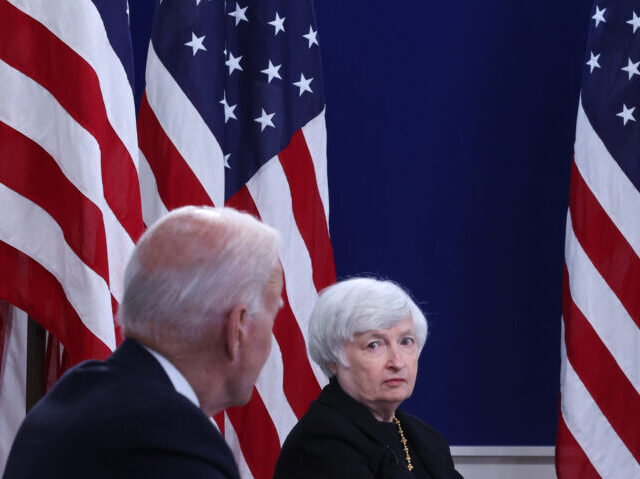U.S. economic growth was weaker and inflation was stronger than previously estimated in the fourth quarter of last year, revised government data showed on Thursday.
The economy grew at an annual inflation-adjusted pace of 2.7 percent in the October through December period, according to the Commerce Department’s second estimate of gross domestic product. The previous estimate had the economy growing at a 2.9 percent pace.
The downward revision was driven by a sizeable downshift in the estimate of consumer spending. Originally estimated at growing a 2.1 percent annual rate, the new estimate has consumer spending growing just 1.4 percent.
The slowdown in spending may reflect changes in end-of-the-year spending habits by U.S. households. Holiday shopping has shifted to earlier in the year, with many consumers buying holiday gifts as early as September—which falls in the third quarter of the year.
Consumer spending, however, may already be regaining steam. Retail sales in January came in above expectations and labor market indicators have been extraordinarily strong, with jobless claims running at historically low levels, job openings expanding to 11 million, unemployment falling to the lowest level in decades, and payrolls expanding by a blisteringly hot half-a-million in Janury. Inflation accelerated in January after a reprieve in November and December.
The signs of renewed economic momentum have forced investors and analysts to rethink their expectations for inflation and monetary policy. Market indicators now show the Fed is expected to raise its benchmark rate by three-quarters of a point, up from the half a point expected at the start of the year. Simiarly, expectations for a recession have been pushed back from the first half of this year into the second half.
The Commerce Department also revised up its estimate of business investmentto a 3.7 percent pace from the previous estimate of 1.4 percent.
The estimate for the personal consumption expenditure price index, a measure of inflation used by the Fed in its forecasts and its two percent target, was revised up from 3.2 percent to 3.7 percent. Core prices, which exclude food and energy, are estimated to have risen 4.3 percent, up from the earlier estimate of 3.9 percent.

COMMENTS
Please let us know if you're having issues with commenting.